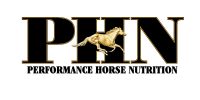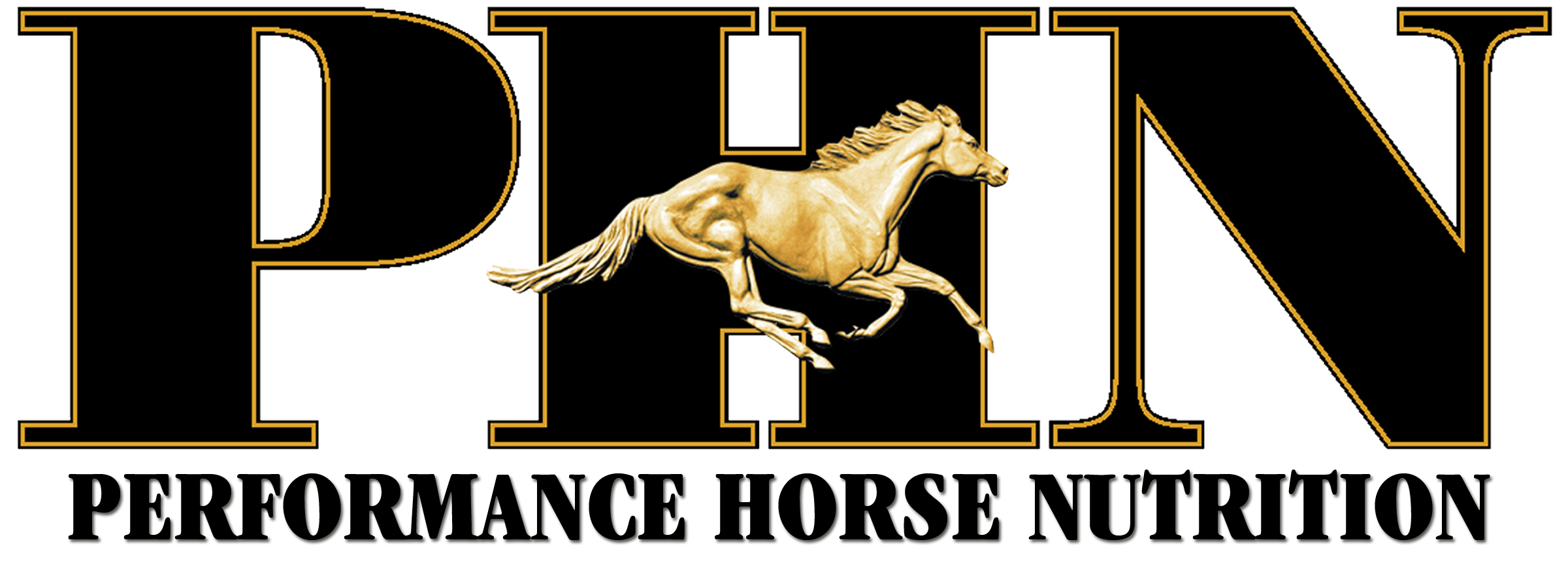PASTURE TURN OUT STRATEGIES TO
LIMIT NSC INTAKE
February 27, 2018

Written by Performance Horse Nutrition
Nonstructural carbohydrates from forage for sick or at risk horses. Research has shown that pasture-induced laminitis occurs at times of rapid grass growth. The accumulation of certain carbohydrates including fructans, starches, and sugars (Non-Structural Carbohydrates, NSC) in pasture forage during the spring, early summer and fall, particularly after rainfall precipitate this laminitis. Therefore we must carefully manage pasture turnout and forage intake in horses and ponies that are at risk for developing laminitis or are currently affected. We also understand that horses suffering from insulin resistance (IR) and or Cushings (Pituitary pars intermedia dysfunction, PPID) as well as horses and ponies with the ‘‘easy keeper,’’ phenotype that are often overweight or obese, and may be persistently hyperinsulinemic should also be managed carefully with regard to their carbohydrate intake.
Decisions regarding whether and to what extent affected animals can be allowed access to pasture must be made on a case-by-case basis; however, in general:
• The affected horse or pony should be held off pasture until there has been complete resolution of the acute laminitis episode and, when indicated, diagnostic testing for IR and PPID. If there is no evidence of IR or PPID, a gradual reintroduction to pasture may be considered. Start with 1 to 2 hours of grazing once or twice per day or with turnout for longer periods if the horse is fitted with a grazing muzzle. More caution may be required when pasture is green and growing rapidly (eg, in spring).
• Obese insulin-resistant horses should be held off pasture for a longer period (eg, 2–3 months), allowing time for implementation of management changes (ie, dietary restriction, increased physical activity) that result in improved insulin sensitivity. Even then, it is advisable to restrict severely or avoid any grazing during periods in which the pasture forage NSC content is likely to be high (eg, spring and early summer, after summer and fall rains that cause the grass to turn green, pastures that have been frosted or drought stressed).
• Some insulin-resistant horses and ponies with history of repeated episodes of laminitis require permanent housing in a dry lot because they seem to be susceptible to further episodes of laminitis in the face of even small variations in pasture availability and nutrient content.
The following points summarize current advice regarding strategies for avoiding high NSC intakes by horses and ponies at risk for pasture laminitis:
• Animals predisposed to laminitis should be denied access to grass pastures, particularly during the spring.
• At other times of the year, limit the amount of turnout time each day (eg, 1–3 hours) and turn animals out late at night (after 8:00pm) or early in the morning, removing them from pasture by midmorning at the latest (before 10:00am, because NSC levels are likely to be at their lowest late at night through early morning).
• Alternatively, limit the size of the available pasture by use of temporary fencing to create small paddocks or use a grazing muzzle.
• Avoid pastures that have not been properly managed by regular grazing or cutting, because mature stemmy grasses may contain more fructan (it is stored in the stem).
• Do not turn horses out onto pasture that has been exposed to low temperatures in conjunction with bright sunlight, such as occurs in the fall after a flush of growth or on bright cool winter days, because cold temperatures reduce grass growth, resulting in the accumulation of fructan.
• Do not allow animals to graze on recently cut stubble, because fructan is stored predominantly in the stem.
Animals denied access to pasture for most or all of the day, require provision of alternative feedstuffs. Horses at maintenance require approximately 2.0% of their body weight as forage or forage plus supplement to meet daily nutrient requirements. Grain and sweet feeds should not be fed, and the feeding of other ‘‘treats,’’ such as carrots and apples, should be discouraged. Forage (as hay or hay substitute, such as forage pellets or cubes, chop, chaff, or haylage) should be the primary, if not sole, energyproviding component of the ration. Alfalfa hay or other legumes, such as clover, on average, have lower NSC content when compared with grass hay but have considerably higher calorie/energy content. Generalities regarding carbohydrate value of forages should in most cases, however, be avoided. Ideally, hay should be analyzed for Water Soluble Carbohydrates (WSC), Ethanol Soluble Carbohydrates (ESC) and starch, and should be reviewed before selection. The addition of WSC and starch is the closest to what we call NSC and for the at-risk or laminitic horse this value should be less than 10 % in a hay analysis. Caution should be taken when feeding significant amounts of poorly digestible hay and forages; anecdotally, this practice increases the risk for impaction colic in some animals.
-Dr. Tania Cubitt

